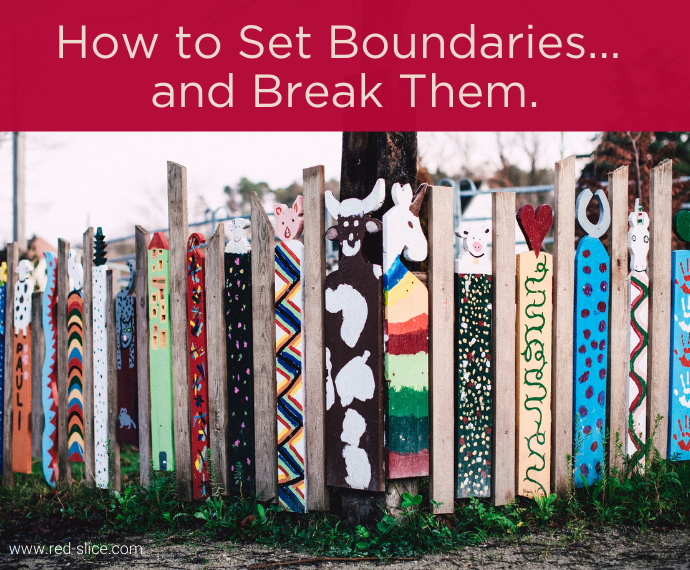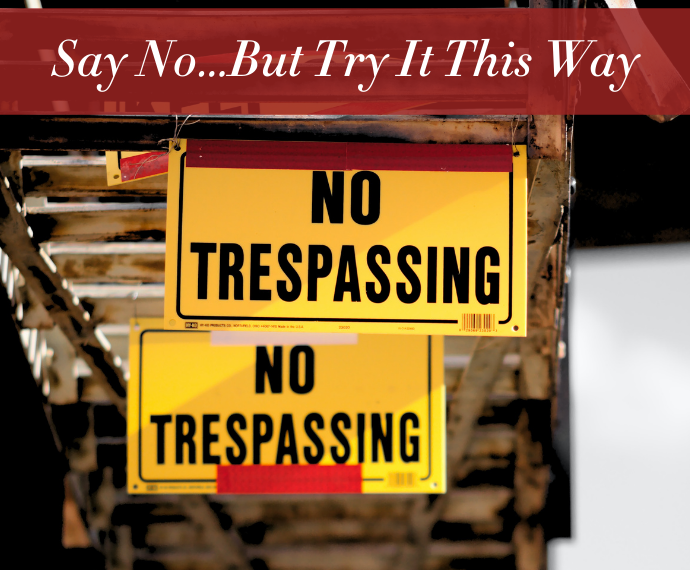
We’re always talking about boundaries.
How to set them.
How to think outside of them.
How to break them.
So which is it? Set them or smash them?
It’s both.
Setting boundaries is key to getting more done. When you know who you are, and what needs doing, you can focus. And that means saying no to the wrong opportunities, clients, relationships that don’t serve your purpose.
Setting boundaries enables you to go after the life you want.
But….we also can’t let boundaries box us in!
Setting a boundary that cars can’t cross the double yellow lines in traffic saves lives.
But, setting a boundary that you can’t go talk to that VP you really admire because that’s just not the way we do things around here helps no one.
To make change, invent, or ignite, we have to question certain boundaries. We have to cross them and see what’s on the other side. It could be better. If boundaries exist around people, or your work, or heck, your dreams – you owe it to yourself to step through.
How do we reconcile setting boundaries with smashing them?
We must ask: Is it a healthy boundary? If I set my schedule to get offline at 4 pm so I can pick up my son from school and spend time with him, that serves me. That is something that energizes me, gives me quality family time, and enables me to come back stronger and recharhed for my clients the next day.
But if I put up a boundary around becoming friends with my clients, who does that serve? I want to work with people I enjoy, and people I enjoy often become friends. You can dance the line between work and personal if you’re just open and honest. This also is true for corporate types. Some say, “Keep your personal life out of your work.” Which is true, to some extent, but it doesn’t mean we have to keep your humanity out of your work! You don’t park it at the door.
Get to know your work colleagues. Understand their lives. Check in. Then, when it comes time to collaborate, innovate, or invent, there is trust there. There is mutual understanding of each other’s lives outside of work. You can understand where someone is coming from, and build from there. It doesn’t serve you to set this boundary because it stops you from collaborating and effectively with and trusting each other.
When I was in corporate, I did my best work with a team of people I was close to. People I would work with all day and then go out for drinks with at night. We trusted each other. We could brainstorm crazy ideas without fear and create amazing marketing campaigns. We could adapt quickly when things went wrong during a global roadshow and trust each other to get someone to the airport on a moment’s notice. We had each other’s backs. We got each other through and delivered amazing work.
When you are pulled into creating a boundary, be sure it’s one that serves you. (Tweet This!)
That makes you and your work better, not worse.








